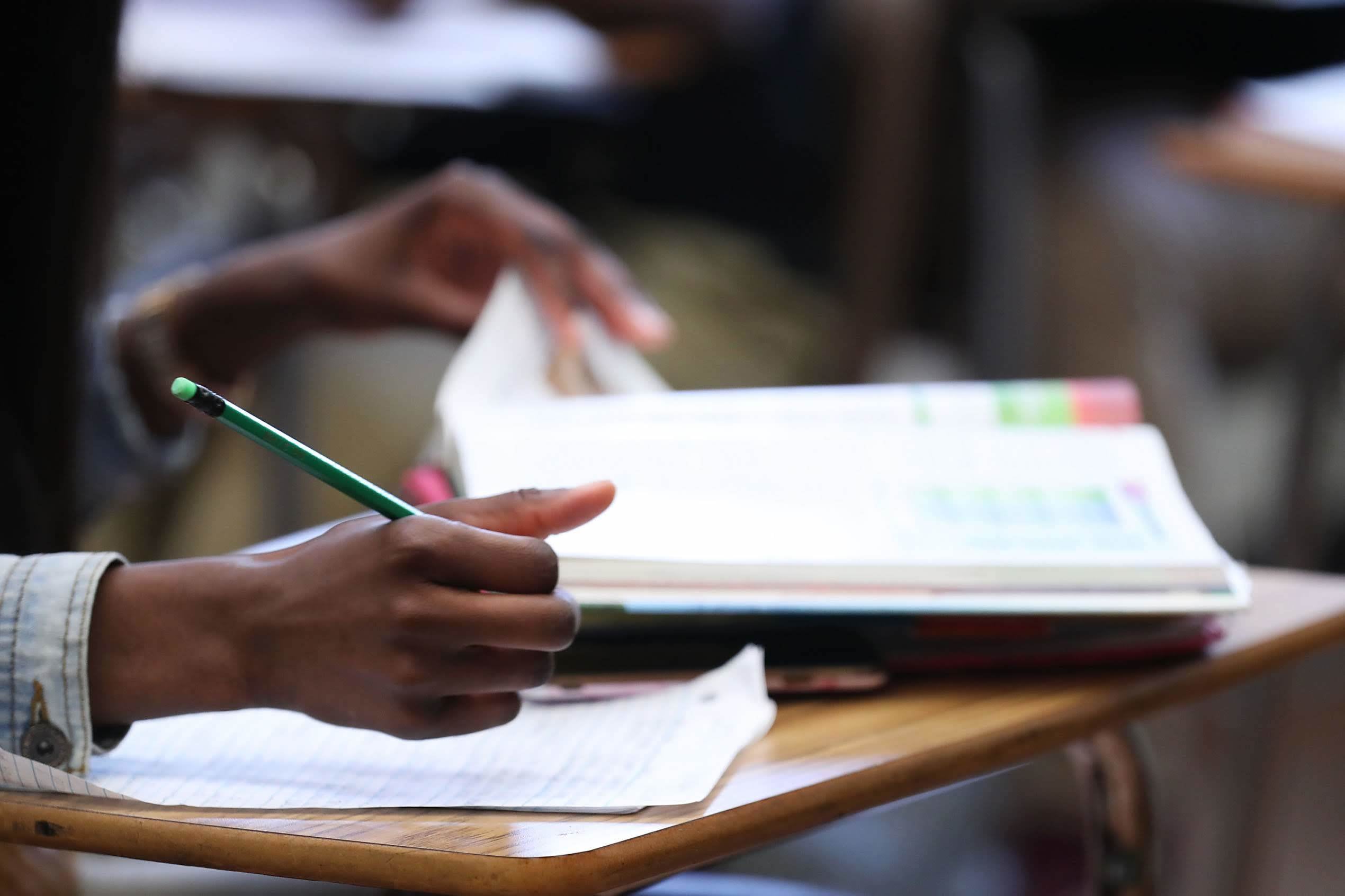Sign up for Chalkbeat Newark’s free newsletter to keep up with the city’s public school system.
A coalition of advocates and families have less than two weeks to appeal a New Jersey Superior Court judge’s mixed ruling that said they failed to prove the state’s public education system is socioeconomically segregated and that racial segregation exists across every district.
The long-awaited decision from Judge Robert T. Lougy released last week also found that the state’s actions, policies, and programs have failed to remedy the racial segregation evident in numerous school districts throughout New Jersey — rejecting the state’s defense that it should not be held responsible.
Not only did the 99-page pre-trial court ruling avoid overwhelmingly favoring one side over the other, it also stopped short of answering key questions, including what the state should be required to do next.
Legal representatives of both sides have said they’re reviewing Lougy’s decision with their clients. Plaintiffs have until Oct. 26 to decide whether to go to trial, start negotiations, or file an appeal. If they decide to pursue a “leave for appeal” — a motion to appeal a legal error in the case before it goes to trial — they can get a 15-day extension, New Jersey courts rules state.
As questions still linger, here’s a guide to the case, including key points raised in the lawsuit and possible next steps.
Who are the players involved in the case?
The ruling is the latest in a five-year legal battle that began when several families and advocates sued New Jersey, arguing that the racial isolation experienced by thousands of Black and Latino students violates the state constitution, which is rare in its explicit ban on school segregation.
The coalition of plaintiffs includes the families of nine students that attended schools in Camden, Elizabeth, Highland Park, Hoboken, Newark, Paterson, and Union City, and five advocacy groups, including Latino Action Network, NAACP New Jersey State Conference, Latino Coalition, Urban League of Essex County, and The United Methodist Church of Greater New Jersey.
The root of their lawsuit — arguing that the state is liable for the segregation that is “unlawful, persistent, and pervasive” across its entire public educational system — is in part driven by a residency statute known as the “home rule.”
That statute stipulates that each municipality has its own separate school district — totaling more than 600 districts in New Jersey — and that children who live in that town are assigned to go to those schools. The plaintiffs pointed out that the “undisputed history” of discriminatory governmental housing policies led to New Jersey’s residential segregation, which has only been replicated in the school system under the home rule.
Meanwhile, the defendants are the State of New Jersey, the state Board of Education, the state Department of Education, and Acting Education Commissioner Angelica Allen-McMillan, as well as intervening defendants, which include representatives and parents of students in charter and renaissance schools.
The state argued that it is not in violation of its constitution and that segregation in a handful of districts doesn’t establish a statewide violation. They also argued that relief of the existing segregation would “essentially obliterate the state’s entire public school system.”
Does New Jersey have segregated schools?
New Jersey has one of the nation’s top-performing school systems, but studies have shown it’s also one of the most deeply divided by race and class. While integration has been shown to benefit students, policymakers across the country have largely abandoned it due to political opposition and legal restrictions.
The state ranks sixth in the nation in terms of the highest segregation of Black students and seventh in segregation of Latino students, a UCLA Civil Rights Project study found in 2017.
As part of their evidence, the plaintiffs used 2016-17 state enrollment data that showed 30% of Latino students and 25% of Black students attend schools where the non-white student enrollment is between 90-99%, the lawsuit states. They also identified 23 districts with high percentages of Latino and Black students who qualified for free or reduced-price lunch, which included Newark, East Orange, Orange, and Irvington.
In his opinion, Lougy noted that while he did not think they proved there is “statewide” segregation, the plaintiffs were able to show “marked and persistent racial imbalance” exists in a number of school districts. He agreed with the plaintiffs that the state’s argument of changing demographics showing a decrease in white students “may present challenges, but those challenges only emphasize, not diminish, ‘the obligation and power of education officials to remediate racial imbalance.’”
What could happen to New Jersey’s home rule?
Outside New Jersey, talk of school segregation has been stifled in recent years by pandemic pressures and the conservative backlash against calls to confront systemic racism. But as this case continues to make its way through the legal system, it could thrust integration back into the national conversation.
Stefan Lallinger, who heads a network of school districts and housing agencies committed to school integration, has said the message with this case “is that this issue is alive and well.”
Some possible measures, such as creating new magnet schools that enroll students from multiple districts, could be expensive yet popular with families. But other potential remedies, such as allowing students to transfer schools or redrawing district boundaries, have historically faced resistance from wealthy white parents and taxpayers who fear that an influx of poor students of color will undermine their community’s schools and home values.
In its argument, the state defended its residency statute, which has students attend schools in the town where they currently reside. The coalition of advocacy groups disputed the state’s claim that there is a “public need” for the home rule and that parent engagement would be negatively affected if schools were more integrated.
“Neither municipal nor school district boundaries are impermeable in the fight against segregation,” Lougy said, adding context from previous state Supreme Court rulings. “In meeting the constitutional obligation, and notwithstanding the residency statute, the commissioner is vested with the authority to ‘cross district lines to avoid ‘segregation in fact.’”
The lawsuit and the discussion over home rule have prompted some Republican lawmakers to sponsor bills proposing to make the home rule part of a state constitutional amendment.
State Sen. Jon Bramnick, a Republican representing Morris, Somerset, and Union counties, said in an interview with Chalkbeat that this issue should be handled through the legislature, not through lawsuits. In February 2022, he sponsored a bill, which had a similar proposal in the Assembly, that aimed to ensure students attend the public school closest to their home.
Bramnick said he fears that without amendments to the state constitution, the issue of home rule could take decades to decide in the courts. “I don’t think anyone questions if de-facto segregation exists in our schools,” Bramnick said. “So don’t hide behind the court system.”
What’s next and what other remedies are possible?
Oct. 26 is the deadline for the parties to file an appeal, which would allow them to ask for another 15-day extension.
They can also pursue a trial or negotiations. Another option is to ask the court for aspects of the opinion to be reconsidered or clarified, though given how it took a year and a half to get this ruling, that would likely only further protract the legal proceedings.
In the past, state efforts like New Jersey’s haven’t driven desegregation. Instead, federal actors have taken the lead.
In 1954, the U.S. Supreme Court declared that racially segregated schools are “inherently unequal.” Yet little changed until federal courts and agencies, empowered by the 1964 Civil Rights Act, stepped in to enforce the ruling. Then school segregation plummeted in the South, where most court orders were issued, and Black students benefited in and out of school.
But the federal government has steadily retreated from desegregation since the 1980s, with agencies easing enforcement and courts releasing districts from oversight. Many local officials also shied away due to political resistance and a 2007 Supreme Court ruling that limited (but did not forbid) the use of race in voluntary integration plans. Today, active integration policies can be found in just 119 of the country’s more than 13,000 school districts and 66 charter schools, according to a 2020 analysis.
Frustrated by the federal and local inaction, New Jersey’s integration advocates took their fight to the state court. In 2018, a group of nine students, their families, and a coalition of religious and civil rights groups sued the state in hopes of forcing school integration.
“It seemed like our only option,” said Christian Estevez, president of the Latino Action Network, the lead plaintiff.
Advocates sought a statewide solution because New Jersey’s segregation is driven mainly by the race and wealth gaps between its roughly 600 school districts. An effective integration plan would allow more students to move between those divided districts, experts say, perhaps by expanding an existing transfer program.
New Jersey’s northern neighbor can offer inspiration — and a warning.
In 1989, students in Hartford, Connecticut filed a lawsuit alleging that the city’s segregated schools violated the state constitution. Seven years later, the state Supreme Court issued a historic ruling in favor of the students, including lead plaintiff Milo Sheff.
The Sheff case resulted in a series of voluntary integration plans. Newly opened magnet schools drew white and Asian American students into the city, and a transfer program let Black and Latino students enroll in suburban schools. The programs created more diverse schools and improved achievement for some students.
Yet many Hartford families remain disappointed. Despite generous financial incentives, suburban districts have never accepted enough transfer students to meet demand. And, in order to maintain diversity, some city magnet schools with open seats turn down Black and Latino applicants. Today, the vast majority of Hartford students still attend segregated schools.
In January 2022, the plaintiffs and state agreed to a final settlement, which would create additional magnet schools and open more seats for transfer students. Milo Sheff, who was in fourth grade when the case began, is now 43 years old.
John Brittain, the Sheff plaintiffs’ lead counsel, said New Jersey advocates will have to fight — perhaps over many years — to keep the state committed to the integration agreement.
“You really need grassroots people, community organizing, like we have in the Sheff movement,” he said.
Building a popular movement around desegregation would seem especially difficult at a moment when Americans disagree on whether schools should even teach about racism. Yet it is possible to win support for integration, said Lallinger, the head of a network of school districts and housing agencies committed to school integration. Earning parent and community buy-in requires education, dialogue, and persistence, he added.
“We shouldn’t pretend the work is easy,” Lallinger said. “But we also shouldn’t put blinders on and say that the status quo is acceptable.”
Patrick Wall contributed reporting to this article.
Samantha Lauten contributed reporting to this article.
Catherine Carrera is the bureau chief for Chalkbeat Newark. Reach Catherine at ccarrera@chalkbeat.org.








